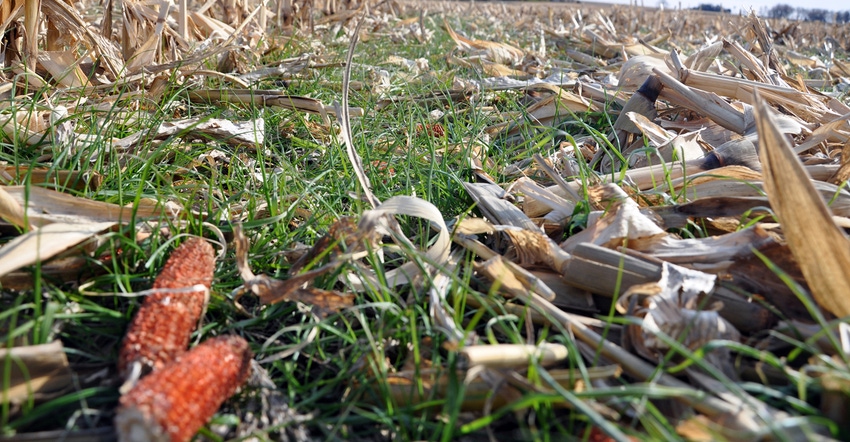April 25, 2017

A common question regarding cover crops and spraying them with herbicide: Will the interception of preemergence herbicide by the cover crop reduce the activity of the herbicide?
If this was a consistent problem, it would make sense to apply the preemergence herbicide in a separate application from the burndown after much of the cover crop residue has degraded, says Bob Hartzler, Iowa State University Extension weed management specialist. The primary concern is that the preemergence herbicide will be absorbed into the cover crop and not be released into the soil profile with rainfall.
Numerous interactions occur between the cover crop, weeds, herbicide, soil and environment in these situations, making it difficult to predict exactly what will happen, he says. The lack of information from other states with a longer history of planting cover crops suggests this is not a major problem. Following are some of Hartzler’s additional thoughts on spraying herbicide on cover crops.
The potential for a cover crop to decrease the activity of a preemergence herbicide will increase as termination is delayed and the cover crop accumulates more biomass. More herbicide will be intercepted, and the cover crop will degrade more slowly, therefore tying up more herbicide for a longer period of time. Some herbicide could be degraded by the cover crop before it is killed by the burndown herbicide, or the herbicide could be metabolized by microbes that degrade the cover crop residue. “However, I suspect degradation of the herbicide within the cover crop is less of an issue than the physical tie-up within the cover crop,” says Hartzler.
Should you make separate applications?
Separate applications of the burndown herbicide and the preemergence herbicide probably aren’t warranted when rye is terminated before it reaches a height of 12 to 18 inches, he says. With later termination, there may be a benefit to delaying application of the preemergence herbicide until early post (V1-V2 crop stage). When termination is delayed, the rye may produce sufficient biomass to suppress weed emergence early in the growing season.
Also, applying the preemergence herbicide early post rather than with the burndown treatment will extend activity of the preemergence product later into the season. However, this practice limits your preemergence options to products that can be applied following crop emergence.
“I would only recommend separating the burndown and preemergence herbicides in fields with a dense, uniform stand of cereal rye,” says Hartzler. “A non-uniform stand of the cover crop would leave areas ‘unprotected’ following planting, putting greater pressure on the postemergence product. This would increase both the likelihood of control failures and the selection pressure on weeds for herbicide resistance.”
Preemergence herbicides are routinely applied to crop residue in no-till fields, with little impact on their activity. With crop residues, the herbicide remains on the surface of the residue and is easily washed off with rainfall, he notes. With cover crops, the herbicide can be absorbed into the plant where it is less available to move into the soil profile where preemergence herbicides are active.
Overall, the decision whether to use single or sequential applications of burndown and preemergence herbicides should be based on the amount of cover crop biomass, and also the cost and time requirements for multiple applications.
Source: Iowa State University
You May Also Like




